
-
There's 3 levels of glass companies are using for these adapters. The first Fotodiox was the bottom level, all these other ones are level 2 and the Metabones is level 3.
It is just your own fantasy and fairy tale. No such things as "glass levels" ever existed. You can talk about tolerances, coatings and techniques, but not "glass levels".
All that you see here is better designer for Metabones adapter who know exact specs for coatings he wanted.
That we need is to make good comparison tests and help them improve. Instead of you go bashing every manufacturer.
RJ already made good progress, and they are working hard. I am sure that Metabones quality adapters will be available soon.
It just sucks seeing guys wasting money on inferior products especially when they are getting raped in taxes and import fees. Luckily we really don;'t have that in the US but other countries it seems horribly high.
And this is just not appropriate comment, especially your fantasies about taxes and fees. Any member can PM me and ask about real fees situation, instead of baseless stuff here.
To conclude. Let people express their own opinions, instead of having yours spilled other each and every topic.
-
In general, the optical design plays at least as large a role as lens coatings in the formation of central hotspots. Diagnosing the cause and then correcting the hotspot is often a far more difficult task than correcting aberrations.
-
Coming from the man himself. Personally, I'm glad I went with Metabones, I love it - I've never had an issue with my Speedbooster and the quality is top notch. It's on my camera 95% of the time now. My only regret is that I bought it just before the BMPCC Speedbooster was announced. I will probably own both eventually, I just would have bought them the other way around. Oh well, what can you do?
@brainc1959 Any plans for BMPCC Speedboosters in different mounts?
-
It is not topic about Metabones adapters, period.
-
That we need is to make good comparison tests and help them improve. Instead of you go bashing every manufacturer.
yeah...that's the spirit. People think making things is easy. It ain't ! Feedback is what it's all about....from a man with a few patents !
-
Comparison test help all, and even if the test show that one is better than the other for whatever reason, both manufacturers are trying to provide what we want... it's always good to have options.
-
@Vitaliy_Kiselev My bad, focal reducer cross over.
-
Update: I adjusted the lens group in the RJ speed booster and now I get infinity focus.
I also tested the RJ speed booster against the Fotodiox Pro.
Fotodiox Pro:
much better built quality of the housing
no "blue dot"
infinity focus out of the box
RJ speed booster:
better glas (sharper picture, more kontrast)
lens group can be adjusted to specific lens
The things definitly to improve with the RJ speed booster would be, to give it a better housing (the iris control is so cheaply made!) and to get rid of the blue dot. As I will use the adapter most of the time with open aperture, I would prefer a better housing to be the first target (take the Fotodiox housing and place the RJ optics in it and it would be a very good adapter).
-
@Psyco Can you do some AB comparison? I mean stills or video would be great.
-
@zigizigi I don't have the time to set up a tripod and do a real A/B test, but I took pictures with both adapters handeld (framing changes!) in photo mode and scaled them down to 1920x1080 - the differences are still pretty obvious.
The RJ speed booster is a lot sharper. The Fotodiox is only in the outer most corners a bit better, the rest of the image is a bit "blurry", probably there is still some coma.
Lens used: Tokina 11-16mm at 11mm and F2.8. Focus was on the blue letters on the white paper in the middle of the frame.
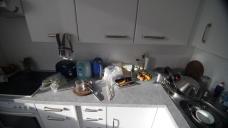
 Fotodiox_small.jpg1920 x 1080 - 361K
Fotodiox_small.jpg1920 x 1080 - 361K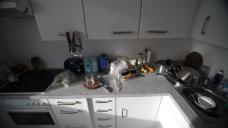
 RJ-booster_small.jpg1920 x 1080 - 361K
RJ-booster_small.jpg1920 x 1080 - 361K -
I just received the m42 version of this adapter and i post some screenshot comparisons in a minute.
-
Taken with an old Chinon 50 mm 2.0 lens set at 2.0 on a regular m42 adapter and the RJ speedbooster m42 adapter attached also at 2.0. Notice the wider angle and a light stop more?
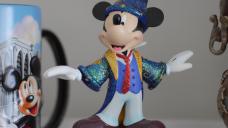
 rsz_p1060007.jpg2304 x 1296 - 414K
rsz_p1060007.jpg2304 x 1296 - 414K
 rsz_p1060006.jpg2304 x 1296 - 429K
rsz_p1060006.jpg2304 x 1296 - 429K -
another example
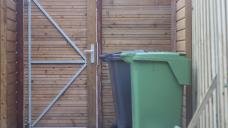
 rsz_p1060004.jpg2304 x 1296 - 429K
rsz_p1060004.jpg2304 x 1296 - 429K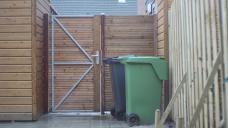
 rsz_p1060005.jpg2304 x 1296 - 461K
rsz_p1060005.jpg2304 x 1296 - 461K -
My conclusion is, it is a wonderful adapter, and really keeps its sharpness, a wider angle and a light stop more. Great quality build. see pictures
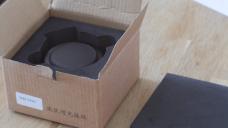
 rsz_p1060011.jpg2304 x 1296 - 321K
rsz_p1060011.jpg2304 x 1296 - 321K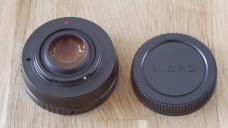
 rsz_p1060010.jpg2304 x 1296 - 440K
rsz_p1060010.jpg2304 x 1296 - 440K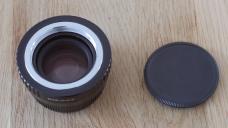
 rsz_p1060009.jpg2304 x 1296 - 477K
rsz_p1060009.jpg2304 x 1296 - 477K -
Shot taken with a Helios 44-2 2/58 at f2.0 without and with RJ speedbooster m42/m43.

 rsz_p1060027.jpg2304 x 1296 - 364K
rsz_p1060027.jpg2304 x 1296 - 364K
 rsz_p1060025.jpg2304 x 1296 - 390K
rsz_p1060025.jpg2304 x 1296 - 390K -
And finally how does a video sample perform with the RJ Speedbooster? See my test video here:
Keep in mind that all shots were taken with the lens at f1.8, and the iso kept at level 200, (lowest possible)
-
@lonely1 thanks for those!
-
@lonely1 Thanks for your efforts. Can you please post the dimensions of this Adapter?
-
I know I've been scolded over my opinion of these cheaper adapters time and time again but can all of you who are looking at this thread honestly say you can't see the massive smearing on the edges of the frames with these things? And once again, like I said, it's my opinion and the forum is called PV, so.................
-
@vicharris if you refer to my pictures - a lot of that smearing in the corners is the Tokina.
And with other pictures - to really see how good it is, we would need some pictures with objects (a wall) that is exactly along the focal plane, and I think thats going to be hard as the focal plane might get bent a lot by this adapters.
-
The m42-RJ adapter is a small adapter which fits perfectly without shaking of the lens, everything fits tight. On most regular adapters it doesn't and there's movement. @gameb what do you mean by dimensions of the adapter? The adapter is 3 cm high x 6 cm wide x 18,84 cm whole circle, if that is what you mean.
-
Great, this is what I wanted to know. Cheers
-
On the left is the regular adapter and the right the RJ speedbooster, both used in the video and photo's.
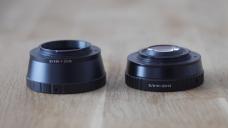
 adapters.jpg2304 x 1296 - 402K
adapters.jpg2304 x 1296 - 402K -
@vicharris Most of the lenses tested are not great in the corners, the Helios for example is a nice vintage lens, but was never known for good corner performance. Judging from the only known good lens, the Nikon, I can't see much smearing at all, just a tad more CA. Even that might be the Nikon itself, since we are looking more into the corners with the Speedbooster.
I'd still like to see a test with a known good M42 like a Tak with the RJ to really judge it. Plus, the image plane getting curved can definitely play a role here.
-
Is it possible to make a passive EF to MFT speed booster? Maybe not as nobody did it...
Howdy, Stranger!
It looks like you're new here. If you want to get involved, click one of these buttons!
Categories
- Topics List23,964
- Blog5,723
- General and News1,342
- Hacks and Patches1,151
- ↳ Top Settings33
- ↳ Beginners254
- ↳ Archives402
- ↳ Hacks News and Development56
- Cameras2,361
- ↳ Panasonic990
- ↳ Canon118
- ↳ Sony154
- ↳ Nikon96
- ↳ Pentax and Samsung70
- ↳ Olympus and Fujifilm99
- ↳ Compacts and Camcorders299
- ↳ Smartphones for video97
- ↳ Pro Video Cameras191
- ↳ BlackMagic and other raw cameras121
- Skill1,961
- ↳ Business and distribution66
- ↳ Preparation, scripts and legal38
- ↳ Art149
- ↳ Import, Convert, Exporting291
- ↳ Editors191
- ↳ Effects and stunts115
- ↳ Color grading197
- ↳ Sound and Music280
- ↳ Lighting96
- ↳ Software and storage tips267
- Gear5,414
- ↳ Filters, Adapters, Matte boxes344
- ↳ Lenses1,579
- ↳ Follow focus and gears93
- ↳ Sound498
- ↳ Lighting gear314
- ↳ Camera movement230
- ↳ Gimbals and copters302
- ↳ Rigs and related stuff272
- ↳ Power solutions83
- ↳ Monitors and viewfinders339
- ↳ Tripods and fluid heads139
- ↳ Storage286
- ↳ Computers and studio gear560
- ↳ VR and 3D248
- Showcase1,859
- Marketplace2,834
- Offtopic1,319











